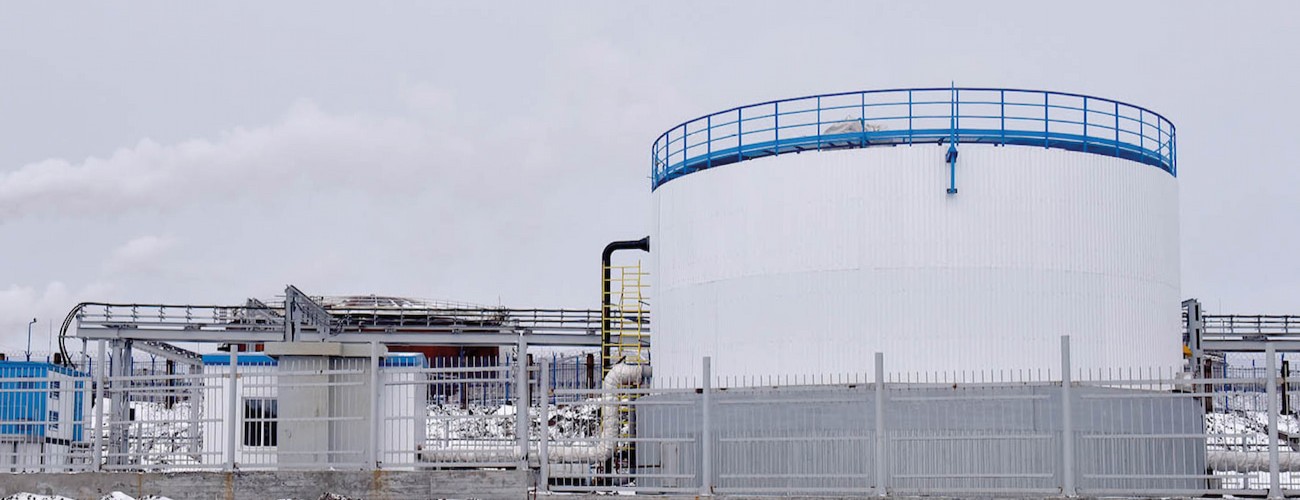Water
Protection of water bodies
Under the 2031 Environmental and Climate Change Strategy and the Position Statement on Water Stewardship, the Company is committed to reduce its impact on water bodies. Nornickel is committed to the sustainable use of water resources, adhering to national laws and leading industry standards, while actively engaging with stakeholders on water management matters.
No major impact of Nornickel’s operations on water bodies was identified; water withdrawal was within the pre‑approved limits in 2024
Nornickel does not operate in areas with water stressAccording to the World Resources Institute (WRI)’s Aqueduct Water Risk Atlas.; accordingly, no water stress is reported across the Company’s footprint
Sufficient volumes of water were supplied to Group enterprises and local communities
The Company withdraws water for production needs and discharges wastewater strictly in line with the pre-approved limits. Nornickel uses water from surface and underground sources for utility, drinking, and production needs, and also recycles and reuses itThe Company does not withdraw water from protected areas or bodies included in the Ramsar Convention on Wetlands of International Importance.. To promote water stewardship and reduce fresh water withdrawal, Nornickel operates a closed-loop water system.
Nornickel routinely monitors the quality of its wastewater to ensure compliance with regulatory requirements. Wastewater quality is assessed in accredited laboratories at legally mandated intervals. Wastewater discharges have no major impact on biodiversity of water bodies and related habitats.
All of the Company’s programmes include measures to ensure that concentrations of substances in wastewater meet regulatory requirements.Domestic sewage discharge points are equipped with biological or physicochemical treatment facilities bringing water released into water bodies in line with the applicable water quality standards.
Some production and mine wastewater is sent for reuse in industrial processes (to the concentrator as well as to sulphuric acid neutralisation under the Sulphur Project).
A total of 82% of wastewater discharge points of the Group’s branches and Business Units are equipped with full or partial treatment facilities. For all discharge points, measures are planned to upgrade treatment facilities, build new ones, or decommission existing discharge points.
The Company takes measures to ensure that the quality of mine and pit water meets established standards, guided by the best available technologies and cost‑effectiveness considerations.

Managing water management risks
The Company’s risks related to water use include:
- pollution of water bodies resulting from tailings or petroleum product spills
- pollution of water bodies due to poor performance of wastewater treatment facilities
- depletion of water bodies caused by withdrawals exceeding permitted limits.
Nornickel continuously assesses its water impact through activities such as stock counting, monitoring of wastewater discharge volumes and quality, observation of surface water bodies at control points, monitoring of wastewater treatment processes, and implementation of relevant measures to improve treatment effectiveness.
In 2024, total water withdrawal from external sources grew 6 Mcm y‑o‑y due to fluctuations in the recycled water withdrawal for equipment cooling at the Energy Division’s energy enterprise. Natural water inflow accounted for 15.5% of total water withdrawal in 2024. The Company runs regular monitoring programmes for water bodies and water protection zones at all operational sites where water is used.
Russian laws determine wastewater quality requirements, including process limits and maximum permissible concentrations of substances in water bodies used for fishery or cultural and household purposes. Nornickel’s wastewater discharges into water bodies are predominantly in line with the pre‑approved limits. In 2024, wastewater discharge increased by 52.1% y‑o‑y due to the discharge of standard‑quality treated water used for cooling at CHPP‑1.
In 2024, pollutants in effluents totalled 90 kt, down 43% y‑o‑y. The list of pollutants in wastewater is determined through studies that take into account the relevant technological processes.
OPEX for wastewater collection, treatment, and disposal in 2024
CAPEX for protection and sustainable use of water resources in 2024
Impact of transport on water bodies
The Company’s use of transport assets, including water transport, impacts the environment as evidenced by Big Scientific Expeditions.
Nornickel develops measures to mitigate risks associated with the negative impact of the Company’s transport on water resources and implements environmental protection measures and programmes, including those aimed at reducing fuel consumption and preventing contamination of the Dudinka and Yenisei Rivers. In order to compensate for damage to aquatic biological resources and replenish the food resources of aquatic habitats, the Company regularly releases juvenile fish (for more details, please see the Biodiversity section).
The Company uses port infrastructure, including water transport, in line with applicable environmental laws on the prevention of water bodies pollution by vessels.
Thanks to the environmental fleet, the Yenisei River basin can be navigated without inflicting environmental damage.
Each year, the Company implements environmental protection measures to prevent damage to aquatic ecosystems from vessel operations. They include:
- laboratory measurements and analysis of surface water composition for compliance with sanitary and epidemiological rules and standards
- monitoring of surface water quality in navigable areas to ensure compliance with public health safety requirements
- maintenance and operation of environmental protection vessels
- upkeep of vessel systems to prevent pollution of water bodies, shoreline areas as well as fleet berthing, repair, and maintenance sites, including pollution caused by waste
- operational and environmental control over the condition of ambient air
- employee training in environmental safety programmes.
Each year during the navigation season, one of the Group’s enterprises, a shipping company operating in the Yenisei River basin, deploys an environmental protection fleet, which includes:
The shipping company’s auxiliary fleet provides the vessels with drinking water as well as collects and transports pollutants from vessels, including rubbish, faecal sewage and bilge water. In 2024, the shipping company’s waste collecting vessels removed approximately 13.9 kt of wastewater (up 4.5% y‑o‑y), 6.83 kt of oil‑containing water (up 1.8x y‑o‑y), and over 282 tonnes of waste, while also delivering 4.68 kt of drinking water to vessels. Spending on environmental initiatives in 2024 totalled RUB 374 million, up 10% y‑o‑y.